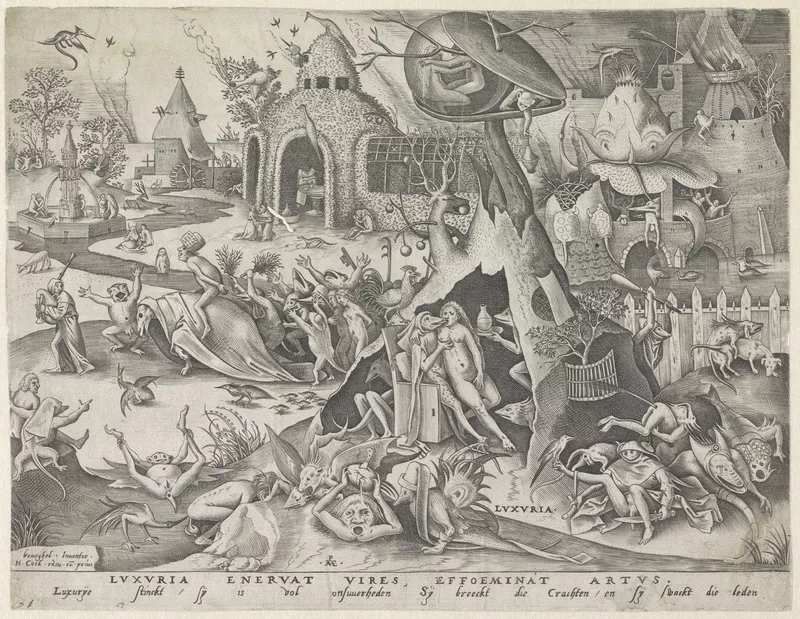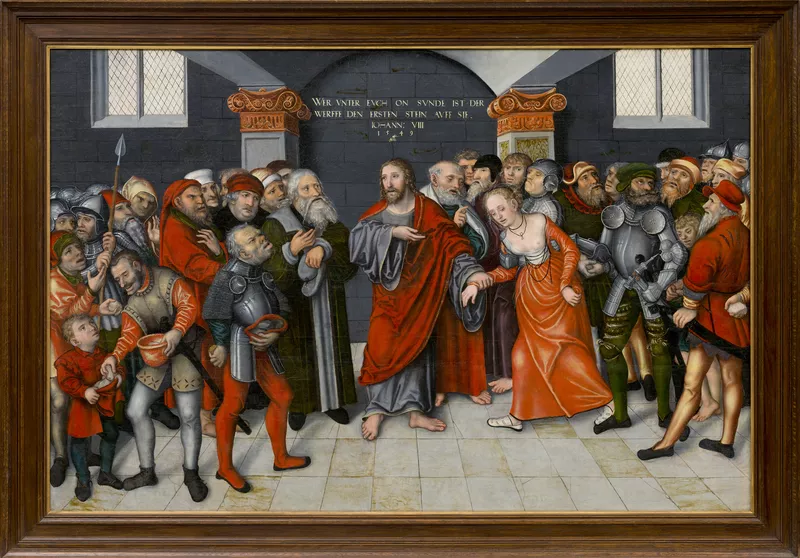
»... be the first to throw a stone at her«: Pictorial representations of the deadly sins
How were deadly sins depicted 500 years ago? What would be »deadly sins« today? The unique exhibition Truly wicked: The Seven Deadly Sins visualised with over 80 works of art from the 16th century moves between these two questions. It can be seen from October 19 at the Bonnefanten Museum in Maastricht.

Lust weakens the strength and softens the body: Pieter Bruegel the Elder's warning message under his depiction of lust reveals exciting insights into 16th century Europe. What moral concepts applied, how did one lead a life pleasing to God? Even if the list of deadly sins (pride, sloth, gluttony, envy, wrath, lust, greed) may seem ridiculous from today's perspective, they nevertheless contain profound truths about human nature, inner conflicts and ideals about interpersonal behavior and a functioning society. With the exhibition Truly wicked: The Seven Deadly Sins visualised, the Bonnefanten Museum in Maastricht holds up a mirror to us by incorporating the deadly sins into current contexts. In which direction is our society developing, what would be »deadly sins« in this day and age? The exhibition with over 80 works of art can be seen from October 19, 2024 to January 12, 2025.
The exhibition focuses on the famous series of prints The Seven Deadly Sins by Pieter Bruegel the Elder (ca. 1525-1569) from 1558, shown in a version by Pieter van der Heyden (ca. 1530-after 1572). Other exhibits include works by Peter Dell the Elder (1490-1552), Lucas Cranach the Younger (1515-1586) and Abraham Jansens van Nuyssen (c. 1570-c. 1632). Among the more than 20 national and international lenders are the Rijksmuseum in Amsterdam, the Germanisches Nationalmuseum in Nuremberg, the Louvre in Paris and the Statens Museum for Kunst in Copenhagen.
The definitive definition of the seven deadly sins in Christianity goes back to Pope Gregory I (around 540-604). These are actually seven major vices that lead to mortal sins such as murder or adultery. Colloquially, however, they are often referred to as mortal sins. Gregory I contrasted them with seven virtues. He combined the three divine virtues of faith, love and hope with the four virtues of prudence, justice, fortitude and temperance, which have been known since antiquity.

Dive deeper into the art world
Textile art: from the 1920s to the 2020s
»History is Painted by the Victors«
The first major museum exhibition by Kent Monkman can be seen at the Denver Art Museum from April 20: The indigenous artist is known for his provocative allusions to European history painting, in which he addresses past and present life experiences of indigenous people in North America.
















